The Weirdest and Wildest 3D Printers
It prints what?! Forget little plastic doo-dads: these cutting-edge 3D printers print lungs, houses, food and more.
Most home 3D printers create small objects in simple plastic. But wouldn't you love to have a 3D printer that could print cookies? Or makeup? Or human organs? Here are 10 of the wildest 3D printers out there, proving that the devices can make a lot more than just doodads.
1. Mobile Fab trash-recycling 3D printer
Why you can trust Tom's Guide
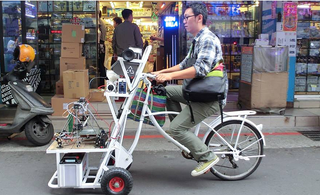
One of the strongest criticisms of 3D printers is that they just print more useless plastic gewgaws. But what about a printer that can take old plastic trash and reuse it to make new objects? Once a futuristic dream, recycling 3D printers are quickly becoming a reality. But the best one so far is the Mobile Fab, a Taiwanese invention that's part bike, part plastic-cup recycler and part 3D printer.
MORE: Best 3D Printers 2014
The Mobile Fab has three parts: a machine that grinds down the plastic cups in which the popular Asian drink called bubble tea is served, a machine that takes these pieces and melts them into filament and a 3D printer that uses the filament to print objects.
The creators, who work for Taiwan-based design studio Fabraft, ride the bike around Taipei to do live demonstrations of what 3D printing can do.
2. Foodini food printer
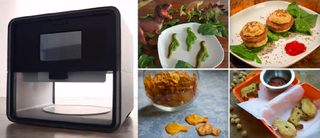
In "Star Trek," futuristic Replicators create fully formed food. The closest thing to that here on Earth is the Foodini, a prototype 3D printer developed by Barcelona, Spain-based Natural Machines. The Foodini can print out dough, sauce, ground meat and other food materials in order to create perfectly formed pizza, chicken nuggets, ravioli and more.
In April, Natural Machines ran a Kickstarter campaign in which the Foodini was priced at $999 for a limited time and $1,300 for regular backers. The Kickstarter was unsuccessful, but the prototype works — and Natural Machines promises the commercial version is still happening.
3 "Made in Space" 3D Printer

Most 3D printers depend on gravity: The material drops from an extruder onto a print plate layer by layer to build objects from the ground up. But what if you wanted to 3D print something in space, where there is no gravity?
California-based engineering company Made in Space is working on a 3D printer that can print in zero gravity. And they're getting close: this August, a Made in Space prototype will be sent to the International Space Station for testing.
4. Mink cosmetics printer
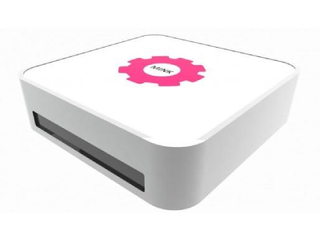
Imagine if you could just print out your lipstick, eye shadow or blush, in any color or amount you desired, right from home. That's the goal of the Mink, a 3D printer designed by entrepreneur Grace Choi that launched at the Disrupt NY technology conference held in New York City this May.
Wit the Mink, people can use any photo-editing software, be it Photoshop or MS Paint, to create or select the exact color they wish. The Mink then mixes a pigment using the same basic components used in most cosmetics, and blends that pigment into makeup cream on the spot. Choi says the Mink will go on sale for less than $200 later this year.
5. 3Doodler
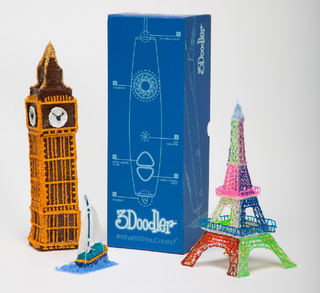
Most 3D printers require you to first use a computer design program to create your print object. With the 3Doodler ($99), no predesign is necessary — just pick up this 3D-printing pen and start drawing in the air.
MORE: 13 3D-Printed Halloween Costume Accessories
The pen extrudes hot, melted ABS plastic that quickly cools, forming lines in the shape in which you move the pen. It's similar to the way a regular 3D printer works: The pen is the extruder and filament cartridge, and you are the rest of the machine. Like a regular 3D printer, you start at the bottom and build upward, layering plastic on top of plastic as you build your object.
6. A whole-building 3D printer
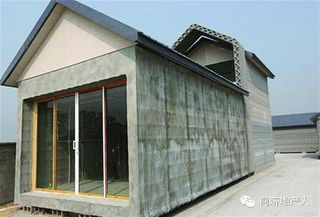
The 3D printers from China-based Winsun New Materials might not be as large as the one from Nanfang Ventilator, but they are still capable of printing near-complete buildings.
Printing in a combination of cement and glass fiber, the printer recently built parts for 10 656-square-foot (61 square meters) homes in Suzhou, China, that were then shipped to and assembled in Shanghai. A Winsun engineer told the Wall Street Journal that, although the process was efficient, unspecified local bureaucratic hurdles currently prevent the practice from becoming widespread.
7. Human-organ printers
Need a new ear, a new lung or a new kidney? Several universities and research groups have developed various "bioprinters" that can print skin cells, organ tissue and other biological material with extreme precision, right down to the blood vessels and other fine details. They do this by laying down stem cells, which grow and differentiate into different types of cells in order to form a full organ. One of this process's main advantages is that patients' bodies are more likely to accept an organ formed of their own cells than a donor organ.
MORE: In Images: A 3D-Printed Liver
But the crown jewel of medical 3D printing is the ability to 3D print an entire developed, functional organ. Surgeon Anthony Atala first proposed the idea in a 2009 TED Talk, and since then, researchers at Hangzhou University in China have developed the Regenovo, a bioprinter that has successfully printed miniature, but functional, human livers and kidneys.
8. Rabbit Proto gadget printer
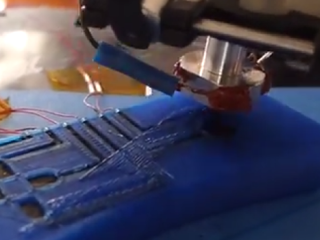
What would it take to 3D print an electronic device — such as a cellphone — in one go? You'd need to print a circuit board, which is no easy feat. The printer would need to print a very precise pattern in multiple materials, at least one of which would have to be a conductive metal.
MORE: What Doesn't Make Sense to 3D-Print?
However, some 3D-printing hardware can print basic circuit boards and simple electronics. One of these is Rabbit Proto, a 3D-printer attachment that clips onto most RepRap 3D printers, creating a second extruder that lays down conductive metal alongside the main extruder that lays down plastic. This lets you print simple electronics like remote controls. It's comparatively affordable, too. One attachment is $350, sold on the company's website, but the project is open-source, so anyone with the parts and the time can build one for much less.
9. Chocolate 3D printer made of Legos

3D printing in chocolate is always fantastic, but plenty of printers are now capable of this confectionary wonder. However, only one of them is made out of Legos.
With some Legos and a few simple parts, such as a funnel for the chocolate and a small heater to make it liquid, you can assemble your very own chocolate 3D printer, thanks to a user named Saul who posted the design to the online do-it-yourself website Instructables. On behalf of all humanity, Saul, we thank you.
10. World's largest 3D printer

In consumer 3D printing, the trend is to get smaller and more home-friendly. But as more industries adopt 3D-printing techniques in their manufacturing processes, printers are getting bigger, too.
In China, Nanfang Ventilator Co. is working on the world's biggest 3D printer — it measures 92 feet long, 75 feet wide and 31 feet high (28 m by 23 m by 9 m). Still nameless, it prints in metals such as carbon steel and stainless steel, and can build objects as large as 20 feet by 33 feet (6 m by 10 m). With a printer that big, Nanfang Ventilator can print parts for nuclear power plants, airplanes, ships and more.
Email jscharr@tomsguide.com or follow her @JillScharr and Google+. Follow us@TomsGuide, on Facebook and on Google+.
Sign up to get the BEST of Tom’s Guide direct to your inbox.
Upgrade your life with a daily dose of the biggest tech news, lifestyle hacks and our curated analysis. Be the first to know about cutting-edge gadgets and the hottest deals.
Jill Scharr is a creative writer and narrative designer in the videogame industry. She's currently Project Lead Writer at the games studio Harebrained Schemes, and has also worked at Bungie. Prior to that she worked as a Staff Writer for Tom's Guide, covering video games, online security, 3D printing and tech innovation among many subjects.
